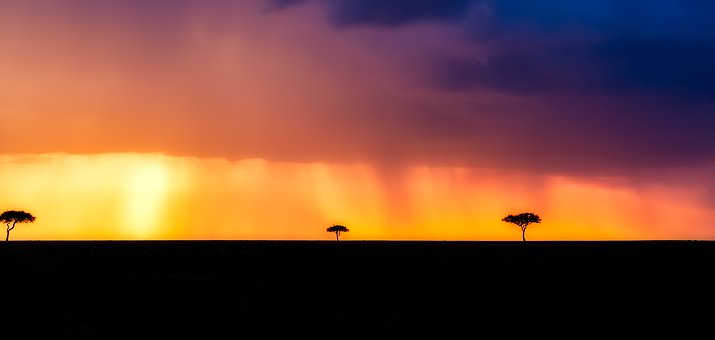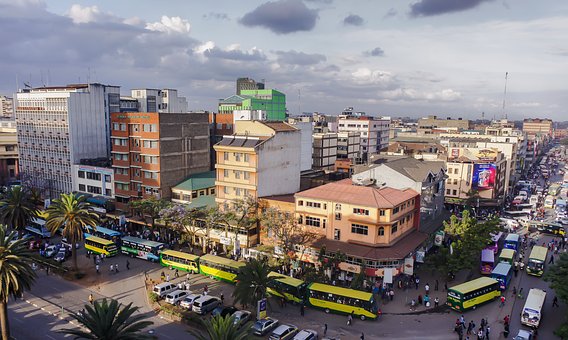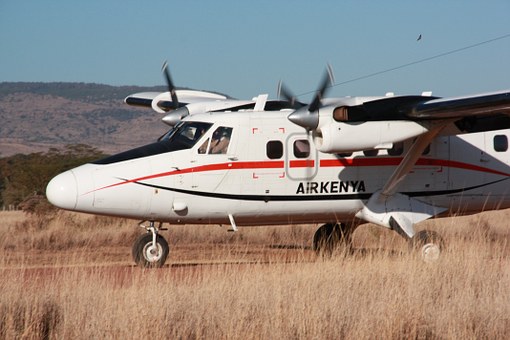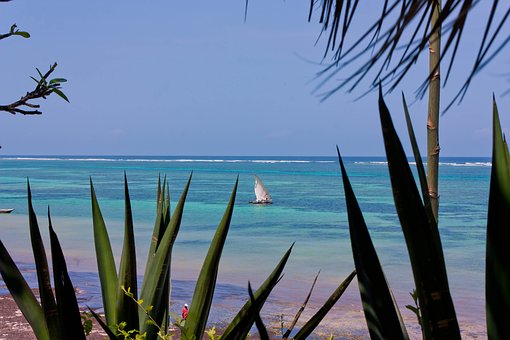Backpacking in Kenya
Beside the classic backpacker destinations like Australia, New Zealand and Southeast Asia, the African continent and especially Kenya are hard to come by. But at the moment the country is still one of the insider tips. On the one hand there is the fear when choosing a destination and on the other hand the ignorance how to travel there best. Basically, this is not so difficult, as there are many possibilities.
Backpacking in Kenya takes you to a state in East Africa that borders on South Sudan in the northwest, Ethiopia in the north, Somalia in the northeast, Tanzania in the south, Uganda in the west and the Indian Ocean in the southeast. The country’s largest city and capital is Nairobi, followed by Mombasa, the second largest city with over a million inhabitants. Until 1963 Kenya belonged to the territory of the English Crown and was under the colonial rule of Great Britain. Today, the country is divided into 47 semi-autonomous territorial entities, each governed by an elected governor.
The country offers endless expanses and indescribable animal movements. One could say that the concept of safari was invented in Kenya. You will encounter elephants, rhinos, snakes, giraffes, cheetahs, leopards and lions in the wild following a true sea of wildebeests that literally shake the earth.
There are large annual animal migrations between the Serengeti in Tanzania and the Masai Mara National Park in Kenya. As a backpacker there is much more for you to discover. You will find unique coral reefs, white sandy beaches along the coast and large tea plantations. There is a good tourist infrastructure which allows you to reach the different destinations.
You can expect indescribable landscapes, a unique culture in which you can immerse yourself and numerous UNESCO world heritage sites such as the old town of Mombasa as a cultural heritage as well as the Mount Kenya National Park and natural forest as a natural heritage. Travelling in Kenya is very pleasant. Coaches are one of the most important means of transport. For example, there are daily bus connections between Mombasa and Nairobi, which you can use comfortably. The cultural, economic and spiritual centre of Kenya is Nairobi, where about 3 million people live.
During your backpacking trip through Kenya you will encounter tropical, subtropical as well as semi-arid and arid climates (dry, arid), depending on whether you are on the coast, in the central highlands or in the north and northeast of the country. In addition, there are climatic fluctuations due to the dry and rainy seasons. You can get money in the big cities at the cash machines of the different banks. Besides the credit card you can also get money with an EC card, if the machines are equipped with the Maestro sign.
In Kenya there are two official languages, Swahili and English. Sometimes French and German are spoken as well. Therefore you don’t have to worry about communication problems. You can find something to eat at the many street stalls, where you will often be offered delicious, local cuisine.
Culture in Kenya
There is no “culture” in Kenya, as many Asian and Arab immigrants have shaped the culture in Malindi, Mombasa and Luma. Thus a unique mixture with the African culture developed. Due to the more than 40 indigenous peoples in Kenya, music and art are very closely connected with the respective traditions. To festivals and rituals there is always music, which is composed of songs, dances and unique instruments. African music is usually combined with drums.
During your backpacker trip through Kenya you should know about the manners. Therefore you should at least know the greeting “Jambo”. With it you express a certain respect towards the locals and you are confronted with great friendliness. Pay attention also to your clothes. Because despite the poverty in the country, the locals always dress very neat and tidy.
Travelling through Kenya is an absolute challenge, where you will be rewarded with eventful stages, profound impressions and exciting cultures. Due to the critical security situation in the northeast you as a backpacker should refrain from a round trip on your own, as robberies are not uncommon. Join organized tours or armed convoys to minimize the risk. Free travel along the coast is safer.
More Backpacking Information about Kenya
In contrast to other backpacking countries Kenya is a bit more expensive. So you need between 35 and 50 Euro per day to cover your costs.
The country offers you as a backpacker an indescribable nature, unique natural phenomena and a cultural diversity. There are some mountains which are over 4000 meters high, where also Mount Kenya with 5199 meters belongs to. They invite you to unique climbing tours, if you have the right equipment and clothing.
There are several ways to find accommodation in Kenya. You can also find real bargains where you pay only 7 to 10 Euros. On average you pay between 12 and 15 Euro in a hostel and other accommodations.
Kenya’s cuisine is a colourful mixture that is influenced by different peoples. Due to the different cultures, you will be offered very varied and varied food. The different dishes of Kenyan cuisine are strongly influenced by Arabs, Europeans and Indians. For Foodies a true gourmet paradise.
You can simply visit Kenya or get involved with the culture and experience how different life is. Especially in the coastal region you can feel the Islamic impact. Mombasa and Nairobi are interesting places to go shopping. The unique beaches offer many possibilities for water sports or just to relax.
As a German citizen you need a visa to enter Kenya, which you can get at the border stations and airports for 50 US dollars. What else you need to know about Kenya as a backpacker can be found under Visa & Vaccinations.
Backpacker Budget in Kenia
Kenya is not as cheap as you might think, but not as expensive as Western Europe. Therefore, as a backpacker you usually have to expect a budget of 35 to 50 Euros per day. Safaris and other activities are not taken into account, so you should plan additional money for them. The local currency is the Kenya Shilling, KES for short. For one euro you get about 123 KES.
For a simple dish you pay between 5 and 8 euros in a restaurant. If you decide for a luxurious food temple, it can become considerably more expensive. But that’s nothing new. The local beer costs around 1 euro, soft drinks like Coca Cola are between 0.40 and 1.20 euro, depending on whether you buy in the supermarket or in a bar. Imported beers are much more expensive. You get a bottle of water with 500 ml for about 0,40 Euro.
Taxi driving Bus driving in Kenya
Travelling with the local buses is quite inexpensive. In addition to coaches, there are minibuses, so-called Matatus, from private companies, which run long and short distances. Even if the prices vary strongly due to the time of day, distance, duration, weather or skin color, they are always negotiable. So you pay for a journey with a Matatu up to a maximum of 60 minutes about 0.60 euros.
There are also Tuk Tuks in the cities, Autorikschas, which will chauffeur you through the city. A 10-minute drive costs from 0.80 euros to a maximum of 2.80 euros. Beside the classic taxis you can also find Bodabodas, motorbike taxis, which transport you inner-city.
If you use a taxi as a means of transport, you should negotiate a price with the driver before starting the journey so that you don’t experience any nasty surprises afterwards.
Bus travel in Kenya
All over the country you can travel comfortably by long-distance bus. They will take you from Mombasa to Nairobi and many other cities. There are more simply equipped buses as well as luxury liners with air conditioning and much more. The main bus lines include EasyBus, Eldoret Express, Coast Bus, Stallion Bus, Kenya Bus Service and Stagecoach. Tickets are available at the bus station. But you should inform yourself in advance about the equipment, so that the travel is also pleasant. However, driving a bus is not without risk, because serious bus accidents happen again and again due to excessive speed. There it travels more risk-free with the airplane.
Domestic air fares in Kenya
Within Kenya there are some routes where you can comfortably use the airplane. There are flights to Malindi, Mombasa, Nairobi and other destinations. The close transport network includes 250 airports, where they also have a sandy runway. You can fly with Kenya Airways, Airkenya, Mombasa Air Safaris and Jetlink. On the websites of the airlines you can easily search for flight connections. The various airlines already offer a single flight for around 60 euros.
Rail travel in Kenya
There is only one railway line in Kenya that connects Mombasa with Nairobi. If you want to use the railway, you’ll quickly feel like you’ve been back 30 years. You won’t see much of the scenery along the railway line during your backpacking trip, as the trains unfortunately only run at night. For about 35 Euro you travel 1st class and have a dinner and breakfast with you. Tickets can be bought directly at the ticket counter in the train stations.
Backpacker Routen in Kenia
As a backpacker travelling through the country, you will experience a unique culture and indescribable landscapes. You can admire them with a unique animal world and a wealth of plants in the 27 national parks, 4 wildlife parks and 32 national reserves. Approximately 9 percent of the country is protected.
There are also some mountains such as Mount Kenya, which has been declared a UNESCO World Heritage Site for its unique appearance. The summit ascent is rather reserved for experienced mountaineers. Other mountains or secondary peaks that lie more than 4,400 metres above sea level are Grigg Peak, Tilman Peak, Three Sisters, Castle Hill, Delamere Peak and Coryndon Peak. They are surrounded by an indescribable flora and fauna.
In addition, there are a variety of lakes such as Lake Vitoria. It is the third largest freshwater lake in the world. There is a lush and varied vegetation that invites you to take pictures. What shouldn’t you miss on your backpacking tour through Kenya?
Route 1: The classic (15-20 days)
- 3 days to experience Nairobi, the capital of the country with its unique architecture. Shopping is the order of the day.
- 4 days Naivasha with an extended Great Rift Valley Tour, excursions to Nakuru, Baringo, Bogoria, Eldoret and the picturesque Naivasha Lake.
- 3 days to explore Kisumu sanctuaries and archaeological sites and stroll along the shores of Lake Victoria.
- 3 days exploring Nanyuki and the scenery of Mount Kenya. Hiking tours included.
- 3 days Samburu and hiking in the rugged plains and experience the Buffalo Springs -, Shaba – and Samburu National Reserve up close.
- 3 Days Mombasa Experience with a Visit to Diani Beach and Ukunda
- 2 days relaxing on the white sandy beaches of Malindi
Route 2: Backpacker Intensive Trip (up to 35 days and more)
- 4 days to experience Nairobi, the capital of the country with its unique architecture. Shopping is the order of the day.
- 4 days Naivasha with an extensive Great Rift Valley Tour, excursions to Nakuru, Baringo, Bogoria
- 4 days exploring Kisumu sanctuaries and archaeological sites and island hopping on Lake Victoria.
- 1 day Discover Rusinga Island
- 1 day exploring Ndere Island and experiencing unique wildlife.
- 1 day Mfangano Island climb Mount Kwitutu.
- 2 days to Eldoret and the picturesque Naivasha Lake.
- 3 days exploring Nanyuki and the landscape at Mount Kenya. Hiking tours included.
- Discover 2 days Namunyak Wildlife Conservation Trust.
- Hike 4 days in Samburu and the rugged plains and experience the Buffalo Springs -, Shaba – and Samburu National Reserve on safaris up close.
- 4 Days Mombasa Experience with a Visit to Diani Beach and Ukunda
- 3 days relaxing on the white sandy beaches of Malindi
- 2 days Lamu, visit the idyllic fishing village.
Reisezeiten in Kenia
Kenya, the country on the equator, has constantly the same weather conditions and offers 25° to 35°Celsius. However, there is a rainy season between March and June. It also rains a lot during the period from October to mid-December. In the rainy season there is a high humidity.
On the coasts the climate is very pleasant, as the monsoon winds weaken the oppressive heat. The climate in the highlands is very similar to the German climate. Basically you can travel to Kenya at any time of the year. It is only important that you have the right clothes in your luggage. You can avoid the rainy season in the months from mid-December to the end of February as well as in July, August and September.
Backpacker Unterkünfte in Kenia
In Kenya you will find a lot of overnight accommodations which you can use. So you can find beautiful hotels in many places. Especially in the tourist areas these are quite expensive. So in a 5 star hotel you quickly pay 100 Euro and more for an overnight stay, but at the same time you have all imaginable luxury. If you are looking for a cheap place to stay overnight, you can fall back on simple hostels.
How much does it cost to backpack in Kenya in a simple hostel or hostel? Information about the prices can be found on the hostel page Hostelworld. According to this, a bed costs on average as follows:
- Nairobi 10 – 12 Euro
- Mombasa 8 – 12 Euro
- Diani 10 Euro
- Kilifi 10 Euro
- Luma 11 Euro
- Bondo 8 Euro
The prices in the hostels are quite similar in the cities. However, double rooms can deviate significantly from the average prices. Therefore you should also look for hotels and motels. There are certainly cheaper alternatives.
Motels on exit roads and motorways
Motels and hotels are an alternative if you are looking for an accommodation option. Depending on which region you are looking for a hotel room in, you can already get a hotel room for 15 to 30 euros. More luxurious double rooms with TV, private bathroom and PC connection are often around 40 euros. Motels can be found at the entrance and exit roads to cities or motorways. There are hotels not only in the cities, but also near the reservations.
Campsites in Kenya
There are camps all over the country where you can pitch your tent. They often have 4 to 5 stars and offer you a corresponding luxury. The campsites include Mara Bush Camp, Flamingo Hill Camp, Rekero Camp and Amboseli National Park. Camping is a great alternative as you are in the middle of nature and experience a different feeling of freedom and adventure.
Backpacker Trips & Tipps in Kenia
You can simply visit Kenya or get involved with the special features of the country. This also applies when you go on a shopping tour. Not only in the shops, but especially with the flying merchants you can buy great things. You can find them everywhere, but above all in larger cities and tourist centres, where they sell their goods. Not only tourists, but also locals shop there.
Especially for them, bargaining is part of everyday life in order to achieve a significantly better price for the desired product. The same applies if you go shopping at one of the many markets. Always keep in mind that a few euros are already a fortune. The prices are often set very high and can be reduced by 30 to 50 percent.
The country offers you many exciting, profound insights into the culture of East Africa. But as a backpacker you should find out exactly where you can safely travel alone and which areas you should not travel alone.
Backpacker Highlights in Kenya
Your backpacker trip through Kenya usually starts in Nairobi, the capital of the country, which belongs to the Must Lake. From here you can visit the many different national parks such as the Masai Mara nature reserve. During a guided safari you are in good hands, as the scouts know exactly where you can meet wild animals like elephants and lions.
Another highlight is Mombasa and Lake Victoria. Mombasa is famous for its beautiful beaches, but has much more to offer. In the old town of the port you get deep insights into the Swahili culture. On the huge Lake Victoria with its four islands, historic steamboats will take you to the shores of the neighbouring countries. Such a crossing is guaranteed to be a special experience.
Backpacker Insider Tips in Kenya
A real insider tip are the islands Rusinga Island, Ndere Island and Mfangano Island in Lake Victoria. On Rusinga Island you dive into a world where you will find indescribable rock formations and fossil peculiarities. You can find the ancestors of the aardvark and relatives of the trunk-dogs, which you haven’t seen before. There are also several antelope species to be found, where the hartebeest also belongs to.
In the Ndere Island National Reserve you enter the uninhabited Ndere Island, which has an indescribable flora and fauna to offer. The wildlife includes the white-tailed eagle, hippos, Nile crocodiles and sailors. The island is a special place of peace, where you can dive into the indescribable nature.
Another insider tip is Mfangano Island with Mount Kwitutu, which is 1694 m high. About 16,000 people live on the island. Most of the inhabitants are fishermen. While exploring the island you will find holy places of the people living here. You’ll also find ancient murals painted on rock walls by hunters and gatherers.
A real adventure awaits you at the foothills of Mount Kenya in Nanyuki. From here you can climb Mount Kenya, visit the Lewa Wildlife Conservancy and the Ol Pejeta Conservancy, travel to Samburu, Meru and Isiolo and immerse yourself in the culture. This unique city is the gateway to Kenya’s northern destinations.
Essen & Trinken in Kenia
On your backpacker trip Kenya’s cuisine invites you on a culinary voyage of discovery. Even if the food should satisfy the hunger in the first place, there is delicious meat from the grill everywhere. But also vegetarians get their money’s worth. There is a large selection of local food, as well as oysters, lobsters, delicious dishes with fish, shrimps and prawns in the coastal region. During your visit to Lake Victoria you should not miss the Nile perch or the tilapia.
In Kenya, people mainly eat with their fingers. The right hand is used for this because the left hand is considered unclean. On request you can also get cutlery in a restaurant. For a palate that only knows European cuisine, the various foods and spices will take some getting used to. But if you get used to it, you’ll experience a real taste sensation.
Food in Kenya
The use of peanuts and peanut butter is typical of black African cuisine. As a side dish there are boiled eggs, onions, cucumber and fresh fruits. Pineapples, plantains, pumpkin leaves, radishes and kohlrabi are also used for cooking. The roots of the yam plant, manioc and dried fruits are also used.
In Kenya’s cuisine there are influences of Arabs, Indians and Europeans. Sweet potatoes are a firm component. Typical, traditional dishes in Kenya are Ugali, a firm dough and Uji, a porridge, both made from corn flour, millet flour or sorghum (sweet millet flour). There are also dishes made from beans with lamb, beef, goat or chicken meat, which are prepared similarly to a stew.
Rice, kitumbua (baked rice flour balls), chapati (unleavened flat bread), various fruits and vegetables can be found in Kenya’s cuisine. Mandazi, a kind of doughnut you shouldn’t miss.
Drinking in Kenya
In addition to fruit juices made from fresh fruit, in many places you are offered Chai cooked with milk and sugar. A real speciality is the local beer Tusker and White Cap, which you should definitely try. Another type of beer is Uki, which is brewed with honey. Other alcoholic specialities are Kenya Cane, a sugar cane schnapps and Kenya Gold a delicious coffee liqueur.
You should avoid the consumption of tap water. Rather use boiled water or mineral water. This is much better tolerated and does not cause stomach or intestinal discomfort.
Backpacker Visa und Impfungen in Kenia
For your backpacker trip through Kenya there is a visa requirement for German citizens. You can apply for a visa at the Kenyan embassy or at the official border stations at Mombasa or Nairobi airport. The visa is issued for 90 days from the date of entry and can be extended once by 90 days. Valid entry documents are also important. According to the Foreign Office, entry is possible with the following documents:
- Passport: Yes
- Provisional passport: Yes
- Identity card: No
- Temporary identity card: No
- Passport for children: Yes, with photograph
Annotations
You can also apply for a visa electronically at the Kenyan government website.
Medical Information & Vaccinations for Kenya
In addition to the standard vaccinations of the Robert Koch Institute, you should also have other vaccinations such as hepatitis A and B, meningitis, rabies and yellow fever up to date. Malaria is also known. Therefore a vaccination is also meaningful here.
A medical supply is given in tourist areas and the large cities, does not correspond however to the European standard. Therefore it makes sense to conclude a travel health insurance with air rescue and return transport.








